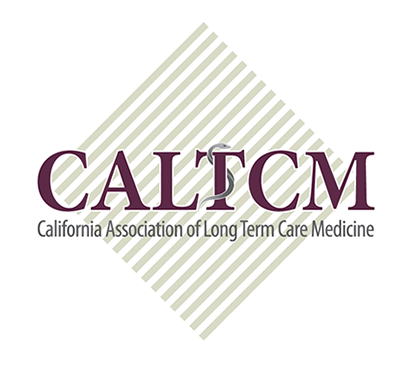| 2025 CALTCM Summit for Excellence |
| On Demand Session |
| 45 |
New Drugs: A 2025 Update |
| |
Speaker: Aida Oganesyan, PharmD, BCGP, APh |
| |
Learning Objectives: |
| |
1. Identify trade and generic names of newly approved drugs in 2024-2025. |
| |
2. Describe the mechanism of action for three newly approved drugs and their black box warnings. |
| |
3. Differentiate newly approved drug agents that are appropriate for use in geriatrics. |
| |
|
| 75 |
Navigating Personality Disorders in Post-Acute and Long-Term Care: Clinical, Philosophical, and Practical Perspectives |
| |
Speakers: Jennifer Birdsall, PhD, George Woods, MD, LFAPA, and Glen Xiong, MD, CMD |
| |
Learning Objectives: |
| |
1. Define and describe the core features and diagnostic criteria of personality disorders, focusing on borderline personality disorder and cluster B traits, with a focus on how they present in older adults in post-acute and long-term care settings. |
| |
2. Contrast differing clinical philosophies on the conceptualization of personality disorders, considering the implications for diagnosis, treatment, and care planning. |
| |
3. Identify common challenges that personality disorders pose for care teams, including interpersonal conflict, emotional dysregulation, demanding behaviors, boundary testing, and staff splitting. |
| |
4. Apply best practices for managing residents with personality disorders, including boundary-setting techniques, trauma-informed care approaches, and interdisciplinary collaboration. |
| |
|
| 45 |
Substance Use Disorder |
| |
Speakers: Soraya Azari, MD |
| |
Learning Objectives: |
| |
1. State the prevalence of substance use disorders in LTCF residents. |
| |
2. Outline the basics of illicit substance use and opioid use disorder medications. |
| |
3. Plan treatment and discharge for patient on high-dose opioids. |
| |
|
| 45 |
The Cost of Caring: How Leaders Can Recognize, Prevent, and Respond to Emotional Exhaustion in Long-Term Care Teams |
| |
Speakers: Jennifer Birdsall, PhD |
| |
Learning Objectives: |
| |
1. Understand and define emotional exhaustion in long-term care. |
| |
2. Identify strategies to recognize emotional strain early. |
| |
3. Discuss proactive steps to prevent burnout. |
| |
4. Learn effective ways to respond when a team member is struggling. |
| |
|
| 45 |
The Relationship Between Antibiotic Stewardship and Surveillance Programs in Long Term Care (LTC) |
| |
Speakers: Dolly Greene, RN, BSN, CIC |
| |
Learning Objectives: |
| |
1. Describe the importance of developing an Antibiotic Stewardship Program in LTC. |
| |
2. Explain the role of the Infection Preventionist and the Medical Director in the ASP. |
| |
3. Review how Loeb's Criteria and McGeer's Criteria are utilized by SNF's in their Antibiotic Stewardship and Outcome Surveillance Programs. |
| |
4. Discuss the relationship between the surveillance process and antibiotic stewardship programs |
| |
|
| 60 |
Use of Prognosis to Improve Preventive Care in Older Adults |
| |
Speakers: Lindsey Yourman, MD |
| |
Learning Objectives: |
| |
1. Discuss how a patient's prognosis and the time-to-benefit of an intervention impact clinical decision-making |
| |
2. Describe the time-to-benefit of several common interventions used in the long-term care setting |
| |
3. Describe three ways to estimate prognosis, including the use of prognostic indices. |
| |
|
|
| 30 |
Supporting Californians Without a Voice: Early Insights from the OLTCPR Launch |
| |
Speaker: Yarin Ascencio, MSW |
| |
Learning Ojectives: |
| |
1. Explain the role of California’s Office of the Long-Term Care Patient Representative (OLTCPR) in providing public patient representatives for people in long-term care who cannot make decisions and have no surrogate. |
| |
2. Review the first-year OLTCPR data to show the impact of public patient representation on resident rights and decision-making in long-term care settings. |
| |
3. Explore future directions to enhance person-centered care for those without surrogates. |

